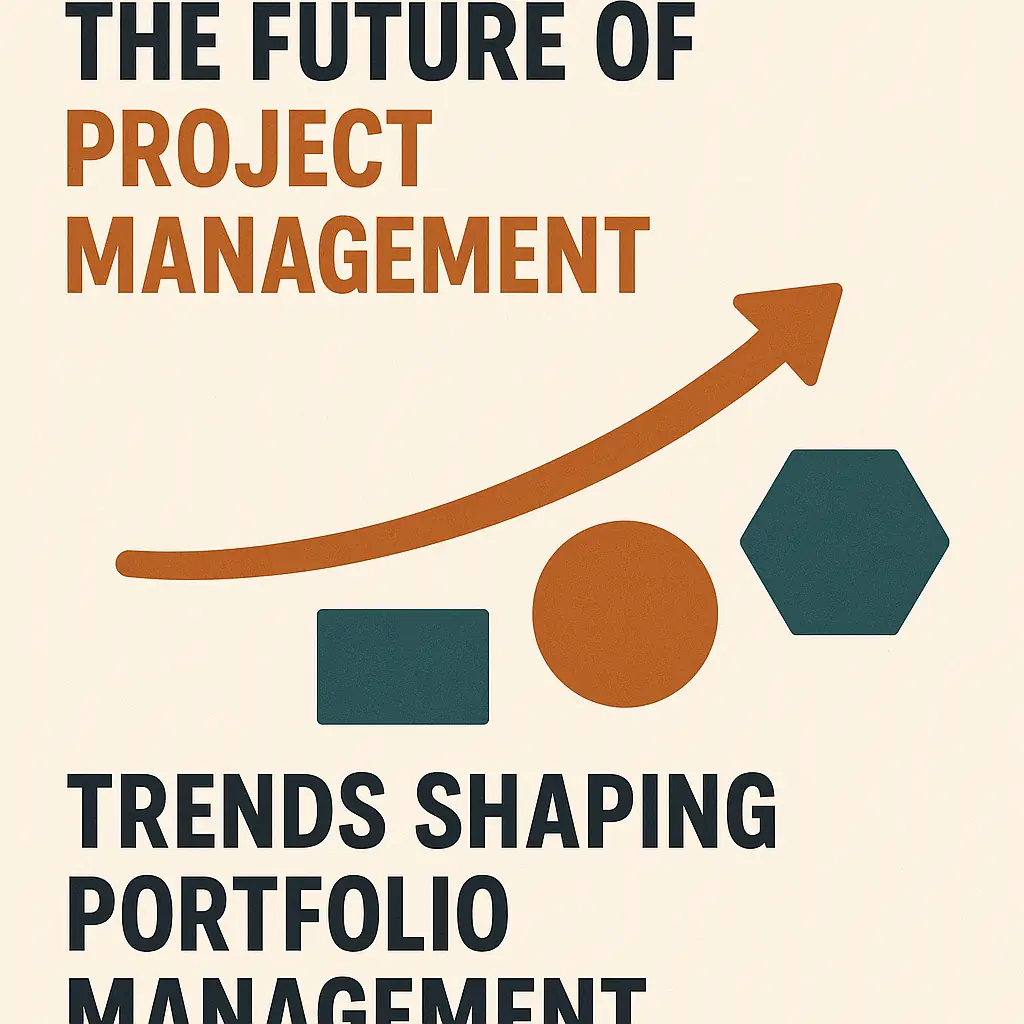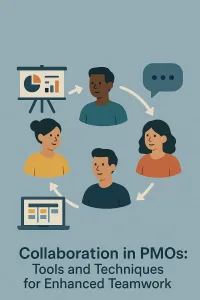Introduction: Understanding Portfolio and Project Management
It is essential for experienced project managers and executives to grasp the distinctions and interconnections between portfolio management and project management. Both disciplines play critical roles in achieving organizational goals, yet they operate at different levels and with unique objectives.
Defining Portfolio Management and Project Management
- Project Management focuses on the execution of individual projects. It involves planning, executing, and closing specific initiatives, ensuring that they meet defined objectives within constraints such as time, budget, and resources. Project managers are responsible for overseeing tasks, managing teams, and delivering results that align with project goals [1][13].
- Portfolio Management, on the other hand, takes a broader view by managing a collection of projects and programs. It aims to optimize the overall value and alignment of these initiatives with the organization’s strategic objectives. Portfolio managers assess and prioritize projects based on their potential impact, resource availability, and alignment with long-term goals, ensuring that the organization invests in the right initiatives [2][7][9].
The Relationship Between the Two Disciplines
The relationship between portfolio management and project management is symbiotic. While project management focuses on the successful delivery of individual projects, portfolio management ensures that these projects collectively contribute to the organization’s strategic vision. This interconnection allows organizations to balance capacity against demand, allocate resources effectively, and visualize how various projects work together to drive growth and success [3][5][8].
The Importance of Integrating Both for Organizational Success
Integrating portfolio management and project management is crucial for achieving organizational success. When both disciplines work in tandem, organizations can:
- Enhance Decision-Making: By aligning project execution with strategic objectives, organizations can make informed decisions about which projects to pursue, ensuring that resources are allocated to initiatives that offer the greatest potential for success [4][11].
- Maximize Resource Utilization: Effective integration allows for better resource management, as portfolio managers can identify overlaps and gaps in resource allocation across projects, leading to improved efficiency and reduced waste [4][9].
- Elevate Stakeholder Confidence: A cohesive approach to managing projects and portfolios fosters transparency and accountability, which can enhance stakeholder trust and confidence in the organization’s ability to deliver on its commitments [4][11].
Understanding the distinctions and interconnections between portfolio management and project management is vital for experienced project managers and executives. As organizations navigate the complexities of project execution and strategic alignment, integrating both disciplines will be key to driving success in the future of project management.
Current Landscape of Project Management
The field of project management is continuously evolving, influenced by various methodologies, challenges, and technological advancements. Understanding the current landscape is crucial for experienced project managers and executives as they navigate the complexities of managing projects and portfolios effectively.
Current Methodologies
Agile:
- Agile methodologies emphasize flexibility and iterative progress, allowing teams to adapt to changes quickly. This approach is particularly beneficial in dynamic environments where requirements may evolve throughout the project lifecycle.
- Agile frameworks, such as Scrum and Kanban, facilitate collaboration and enhance responsiveness to stakeholder feedback.
Waterfall:
- The Waterfall model follows a linear and sequential approach, making it suitable for projects with well-defined requirements and minimal expected changes. This methodology is often used in industries like construction and manufacturing, where stages must be completed in order.
- While it provides clarity and structure, its rigidity can be a drawback in fast-paced environments.
Hybrid:
- The Hybrid approach combines elements of both Agile and Waterfall, allowing organizations to tailor their project management strategies to fit specific project needs. This flexibility can lead to improved outcomes by leveraging the strengths of both methodologies.
- Hybrid models are increasingly popular as they enable teams to adapt to varying project requirements while maintaining a structured framework.
Challenges Faced by Project Managers Today
- Resource Allocation: Project managers often struggle with effectively allocating resources across multiple projects, especially in organizations with limited personnel and budget constraints. This challenge is exacerbated in a portfolio management context, where prioritization becomes critical to achieving strategic goals [8][10].
- Stakeholder Engagement: Engaging stakeholders and managing their expectations is a persistent challenge. Project managers must navigate diverse interests and ensure that communication remains clear and consistent throughout the project lifecycle [12].
- Risk Management: Identifying and mitigating risks is essential for project success. However, the increasing complexity of projects and external factors can make risk management more challenging, requiring project managers to adopt proactive strategies [12][14].
The Role of Technology in Enhancing Project Management Processes
- Project Management Software: Tools like monday.com and other project management software have revolutionized how teams plan, execute, and monitor projects. These platforms facilitate collaboration, streamline communication, and provide real-time insights into project progress, enabling better decision-making [6][10].
- Data Analytics: The integration of data analytics into project management allows for more informed decision-making. By analyzing historical data and project performance metrics, project managers can identify trends, forecast outcomes, and optimize resource allocation [12][15].
- Automation: Automation tools are increasingly being used to handle repetitive tasks, such as scheduling and reporting. This not only saves time but also reduces the likelihood of human error, allowing project managers to focus on strategic planning and stakeholder engagement [12][15].
The current landscape of project management is characterized by a diverse range of methodologies, significant challenges, and the transformative impact of technology. As project managers and executives look to the future, understanding these elements will be crucial in adapting to the evolving demands of the industry and ensuring successful project outcomes.
The Rise of Portfolio Management in Organizations
Portfolio management is gaining prominence as organizations recognize its strategic importance. This shift reflects a broader understanding of how to align projects with overarching business goals and optimize resource allocation.
Understanding Portfolio Management
Portfolio management involves the centralized management of one or more portfolios to achieve strategic objectives. It encompasses the prioritization of projects based on their potential value and alignment with the organization’s strategic goals. This approach allows organizations to assess and rank projects, ensuring that resources are allocated effectively to maximize performance and drive business success [1]. Unlike traditional project management, which focuses on the execution of individual projects, portfolio management takes a holistic view, considering the interdependencies and relationships among various projects [6].
Shift from Project-Based to Portfolio-Based Approaches
Organizations are increasingly shifting their focus from project-based management to portfolio-based management. This transition is driven by the need for greater consistency and stability in managing multiple projects simultaneously. As companies mature in their project management practices, they recognize the importance of cutting “noise” from their portfolios to enhance strategic execution [7]. By adopting a portfolio management approach, organizations can better align their projects with long-term goals, ensuring that every initiative contributes to the overall strategy [11].
This shift is also reflected in the evolving role of project managers, who are now expected to think beyond individual project deliverables and consider how their work fits into the larger portfolio. This broader perspective enables project managers to contribute more effectively to organizational success and adapt to changing business environments [2].
The Role of Senior Executives in Portfolio Management
Senior executives play a crucial role in the success of portfolio management within organizations. Their involvement is essential for establishing a clear vision and strategic direction that guides project selection and prioritization. Executives are responsible for ensuring that the portfolio aligns with the organization’s goals and for making critical decisions about resource allocation [14].
Moreover, as organizations embrace portfolio management, executives must foster a culture that supports collaboration and communication across departments. This collaborative environment is vital for identifying potential synergies among projects and for addressing challenges that may arise during execution [3]. By actively engaging in portfolio management, senior leaders can drive organizational performance and ensure that projects deliver maximum value.
The rise of portfolio management in organizations signifies a fundamental shift in how projects are managed. By understanding its strategic importance, embracing a portfolio-based approach, and involving senior executives, organizations can enhance their project management practices and better navigate the complexities of today’s business landscape. This trend not only reflects the changing nature of project management but also highlights the need for experienced project managers and executives to adapt to these evolving dynamics.
Trends Shaping the Future of Project and Portfolio Management
As the landscape of project and portfolio management evolves, several key trends are emerging that will significantly impact how experienced project managers and executives approach their work. Understanding these trends is crucial for adapting strategies and ensuring successful outcomes in both disciplines. Here are the primary trends shaping the future of project and portfolio management:
1. Integration of AI and Machine Learning
The rise of artificial intelligence (AI) and machine learning is set to revolutionize project and portfolio management. These technologies will streamline processes, enhance decision-making, and increase efficiency by automating routine tasks and providing predictive analytics. Project managers will increasingly rely on AI-driven insights to optimize resource allocation and improve project outcomes, allowing for more strategic decision-making across the portfolio [4][14].
2. Growing Importance of Data Analytics
Data analytics is becoming a cornerstone of effective decision-making in project and portfolio management. The ability to analyze large volumes of data enables project managers to identify trends, assess risks, and make informed choices that align with organizational goals. As data-driven approaches gain traction, project managers will need to develop strong analytical skills to leverage these insights effectively [5][9].
3. Increased Focus on Sustainability and Ethical Project Management
Sustainability and ethical considerations are increasingly influencing project management practices. Organizations are recognizing the importance of incorporating sustainable practices into their projects, which not only enhances their reputation but also aligns with global sustainability goals. Project managers will need to prioritize ethical decision-making and consider the environmental and social impacts of their projects, ensuring that they contribute positively to society [11][9].
4. Impact of Remote Work on Project Management Methodologies
The shift towards remote and hybrid work models has transformed traditional project management methodologies. Project managers must adapt their strategies to accommodate distributed teams, utilizing digital tools and technologies to facilitate collaboration and communication. This trend emphasizes the need for flexibility and adaptability in project management practices, as teams navigate the challenges and opportunities presented by remote work environments [4][11].
The Role of Technology: Tools and Software Innovations
Technology plays a pivotal role in shaping both project and portfolio management practices. As organizations strive for greater efficiency and effectiveness, understanding the current tools and software, as well as anticipating future innovations, is essential for experienced project managers and executives.
Overview of Current Tools and Software
Today, a variety of tools and software are utilized in project and portfolio management to streamline processes and enhance decision-making. Key tools include:
- Project Management Software: Applications like Microsoft Project, Asana, and Trello help teams plan, execute, and monitor project progress. These tools often feature task assignments, timelines, and resource management capabilities.
- Portfolio Management Tools: Software such as Planview and Clarizen allows organizations to manage multiple projects simultaneously, ensuring alignment with strategic goals. These tools provide insights into resource allocation, project prioritization, and performance metrics.
- Analytics and Reporting Tools: Leveraging technology for real-time analytics enables project and portfolio managers to make informed decisions quickly, enhancing operational efficiency and positioning organizations to capitalize on emerging opportunities [2].
Impact of Cloud-Based Solutions and Collaboration Tools
The shift towards cloud-based solutions has transformed how project and portfolio management is conducted. Key impacts include:
- Accessibility and Flexibility: Cloud-based tools allow project teams to access information from anywhere, facilitating remote work and collaboration. This flexibility is crucial in today’s dynamic work environment, where teams may be distributed across various locations.
- Enhanced Collaboration: Tools like Slack and Microsoft Teams promote real-time communication and collaboration among team members, breaking down silos and fostering a more integrated approach to project management. This collaborative environment is essential for aligning project goals with organizational objectives [4].
- Scalability: Cloud solutions can easily scale to accommodate the needs of growing organizations, allowing for the addition of new users and features without significant infrastructure changes.
Future of Project Management Software and Features to Look For
As technology continues to advance, several trends are expected to shape the future of project management software:
- Artificial Intelligence (AI) Integration: The incorporation of AI into project management tools is anticipated to enhance decision-making processes, automate routine tasks, and provide predictive analytics. This will enable project managers to focus on strategic planning rather than administrative tasks [14].
- Increased Automation: Future software will likely feature more automated workflows, reducing manual input and minimizing errors. Automation can streamline processes such as reporting, resource allocation, and task management, leading to improved efficiency [15].
- Enhanced Data Visualization: As data becomes increasingly central to project management, tools that offer advanced data visualization capabilities will be crucial. These features will help project managers interpret complex data sets and communicate insights effectively to stakeholders [12].
The integration of innovative tools and technologies is reshaping the landscape of project and portfolio management. By staying informed about current tools and anticipating future trends, experienced project managers and executives can leverage these advancements to drive success in their organizations.
Skills and Competencies for the Future
As the landscape of project and portfolio management evolves, particularly in the context of digital transformation, the skill sets required for professionals in these fields are also changing. Here are some key skills and competencies that will be essential for project and portfolio managers in the future:
Key Skills Needed in the Age of Digital Transformation
- Technical Proficiency: Project managers must be adept at using digital tools and technologies that facilitate project execution and monitoring. This includes familiarity with project management software, data analytics, and digital collaboration platforms [5].
- Strategic Thinking: The ability to align projects with organizational goals is crucial. Managers should possess strong strategic thinking skills to navigate the complexities of digital transformation and ensure that projects contribute to broader business objectives [8].
- Adaptability and Flexibility: In a rapidly changing environment, project managers need to be adaptable. This includes being open to new ideas, technologies, and methodologies that can enhance project outcomes [9].
- Problem-Solving and Analytical Skills: The capacity to analyze data and solve complex problems is increasingly important. Managers should be able to assess risks and make informed decisions based on data-driven insights [2].
Importance of Soft Skills in Leadership and Team Management
- Communication Skills: Effective communication is vital for leaders to convey their vision and engage team members. Strong communication fosters collaboration and ensures that all stakeholders are aligned with project goals [4][7].
- Emotional Intelligence: Understanding and managing emotions—both one’s own and those of team members—can significantly enhance team dynamics. Leaders with high emotional intelligence can better navigate conflicts and motivate their teams [3].
- Collaboration and Teamwork: As projects become more complex and cross-functional, the ability to work collaboratively is essential. Project managers should cultivate a team-oriented culture that encourages input and cooperation from all members [8].
- Leadership and Influence: The ability to inspire and influence others is a key competency for project managers. This involves not only directing teams but also empowering them to take ownership of their work [6].
Continuous Learning and Professional Development Opportunities
- Certifications and Training: Pursuing certifications such as the Certified Associate in Project Management (CAPM) or Project Management Professional (PMP) can enhance a manager’s credentials and knowledge base. These programs often cover the latest trends and methodologies in project management [11].
- Workshops and Seminars: Engaging in workshops and seminars focused on emerging technologies and management practices can provide valuable insights and networking opportunities. Continuous education is crucial for staying relevant in the field [5].
- Mentorship and Networking: Building relationships with experienced professionals can offer guidance and support. Mentorship programs can help emerging leaders develop the necessary skills and competencies to thrive in their roles [6].
- Online Learning Platforms: Utilizing online resources and courses can facilitate ongoing education. Many platforms offer specialized training in areas such as digital tools, leadership, and strategic management [5].
As project and portfolio management continue to evolve, professionals must embrace a blend of technical and soft skills, along with a commitment to continuous learning. By doing so, they will be well-equipped to navigate the challenges and opportunities presented by the future of project management.
Case Studies: Organizations Leading the Way
The integration of portfolio management and project management is becoming increasingly vital. This section presents case studies of organizations that have successfully utilized both disciplines, showcasing their outcomes, lessons learned, and best practices that can be adopted by others.
1. Fortune 100 Corporation: Integrated Project Management Approach
One notable case study involves a Fortune 100 corporation that implemented an integrated project management approach. This organization faced challenges in aligning its project outcomes with strategic business objectives. By adopting a structured framework that combined project and portfolio management, they achieved significant improvements in efficiency and effectiveness.
- Outcomes: The integration led to a 30% increase in project delivery speed and a 25% reduction in resource wastage. The organization was able to prioritize projects that aligned closely with its strategic goals, resulting in better resource allocation and enhanced ROI.
- Lessons Learned: The importance of clear communication and alignment between project teams and executive leadership was emphasized. Regular reviews and updates ensured that all stakeholders remained informed and engaged throughout the project lifecycle.
- Best Practices: Establishing a governance structure that includes both project and portfolio management leaders can facilitate better decision-making and resource allocation. Additionally, utilizing project management software tools can streamline processes and improve visibility across projects and portfolios [1][3][13].
2. Engineering and Construction Firms: PPM Systems
Engineering and construction firms have also demonstrated the successful integration of project and portfolio management. These organizations often operate in complex environments where multiple projects are running concurrently, making effective management crucial.
- Outcomes: Firms that invested in project portfolio management (PPM) systems reported outperforming their competition across various sectors. They achieved higher project success rates and improved financial performance, with some firms noting a 40% increase in project profitability.
- Lessons Learned: The case studies highlighted the necessity of adaptability in project management practices. Firms that embraced change and were willing to adjust their strategies based on real-time data were more successful in navigating challenges.
- Best Practices: Implementing robust PPM methodologies that include risk management and resource optimization can lead to better project outcomes. Continuous improvement practices, such as post-project reviews, help organizations learn from past experiences and refine their processes [8][11].
3. Technology Companies: Agile Integration
Several technology companies have adopted agile methodologies to integrate project and portfolio management effectively. These organizations focus on delivering value quickly and responding to market changes.
- Outcomes: By utilizing agile practices, these companies have seen a significant reduction in time-to-market for new products. They reported a 50% increase in customer satisfaction due to faster delivery and improved product quality.
- Lessons Learned: The integration of agile practices into project management requires a cultural shift within the organization. Teams must be empowered to make decisions and adapt to changes swiftly.
- Best Practices: Encouraging cross-functional collaboration and fostering a culture of innovation can enhance the integration of project and portfolio management. Regular training and workshops on agile methodologies can equip teams with the necessary skills to thrive in a dynamic environment [2][6][11].
Conclusion: Preparing for the Future of Project and Portfolio Management
As the landscape of project management continues to evolve, understanding the relationship between project management and portfolio management becomes increasingly crucial. Both disciplines play vital roles in ensuring that organizations not only execute projects effectively but also align them with broader strategic goals. Recognizing the differences and interdependencies between these two areas can significantly impact an organization’s success in achieving its objectives. Project management focuses on the execution of individual projects, while portfolio management oversees a collection of projects to ensure they collectively support the organization’s strategic vision [1][12].
In light of emerging trends, it is essential for experienced project managers and executives to embrace these changes and adapt their management strategies accordingly. The integration of technology, such as project management software, is transforming how both project and portfolio managers operate. These tools provide real-time analytics and reporting, enabling informed decision-making that enhances operational efficiency and positions organizations to seize new opportunities [14]. Additionally, the growing emphasis on strategic alignment and resource optimization in portfolio management highlights the need for project managers to be agile and responsive to shifting demands [5][8].
To thrive in this dynamic environment, it is imperative for professionals in the field to commit to ongoing education and networking within the project management community. Engaging with peers, attending workshops, and participating in industry forums can provide valuable insights into best practices and innovative approaches. By fostering a culture of continuous learning, project managers can better prepare themselves and their organizations for the challenges and opportunities that lie ahead [3][4].
In conclusion, as we look to the future of project and portfolio management, staying informed about trends and actively participating in the professional community will be key to navigating the complexities of this evolving discipline. Embrace the changes, adapt your strategies, and invest in your professional development to ensure that you and your organization remain at the forefront of project management excellence.
Find out more about Shaun Stoltz https://www.shaunstoltz.com/about/.
This post was written by an AI and reviewed/edited by a human



